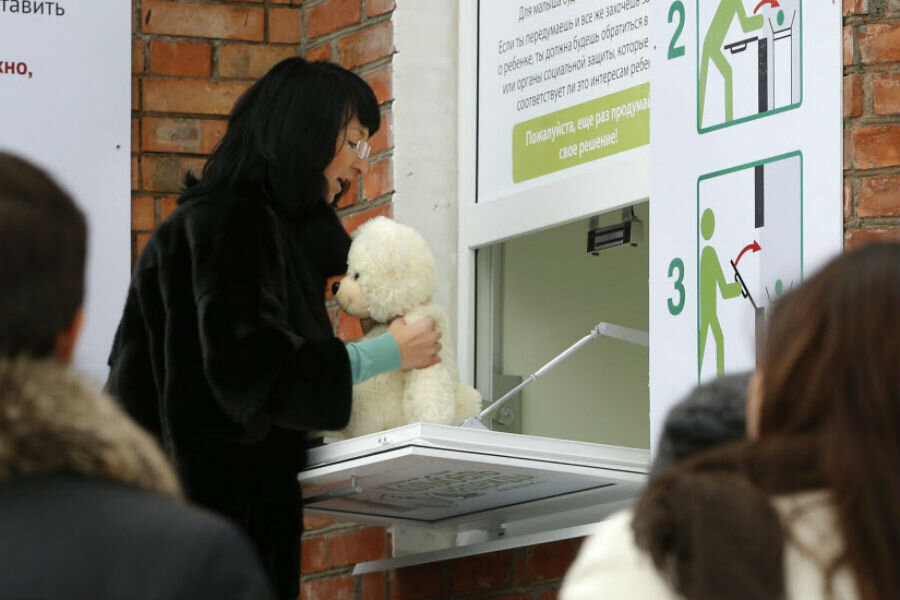Could Russia be close to ending its use of 'baby boxes'?
Loading...
For the past five years, Russian mothers who felt unable to care for their newborns could discretely give them up for adoption. Cradle of Hope, which began in 2011 as a Russian charitable foundation, aimed at reducing infanticide and illegal abortions by creating "baby boxes," where mothers could leave newborn infants at medical centers anonymously.
But the scheme triggered divisive debate, and the program now faces a new challenge after conservative lawmaker Yelena Mizulina introduced a bill to ban the boxes earlier this summer. Ms. Mizulina is concerned that the boxes encourage abandoning babies, leave infants vulnerable to child trafficking, and cause the child to lose contact with their biological parents, according to The Moscow Times.
Ms. Mizulina's bill proposes shutting down organizations that install such boxes for three months, and to impose a fine of up to 5 million roubles, about $80,000.
Baby boxes are seen as an alternative to abortion or infanticide in many countries such as Germany, Switzerland, Italy – and recently, parts of the United States. The idea itself stretches back to the Middle Ages, when many convent walls had a similar space for mothers to leave their babies, the BBC reports.
Supporters say the boxes save babies' lives by offering an alternative for struggling mothers. But critics like Mizulina – and even the United Nations Committee on the Rights of the Child – insist that the practice does not solve the root problems and leads to a host of other consequences.
Both sides have one goal in common, at least: protecting infants. But they have vastly different ideas of how to do it.
"Baby boxes do not operate in the best interest of the child or the mother," Maria Herczog, a sociologist and member of the UNCRC, told The Christian Science Monitor in 2012. "They encourage women to give birth in unsafe and life-threatening conditions." The boxes send the wrong, message, she said: "Just leave your baby, these boxes seem to say. I don't think any community could send this message to any vulnerable person."
According to a March report by The Moscow Times, there are currently 19 baby box schemes in 12 Russian regions. Parents can leave the baby in an incubator-type enclosure in a medical facility with no legal repercussions. Within 30 seconds of shutting the box, staff will receive a signal to remove the baby. Relatives may take the child back if they decide within six months, and take a DNA test; otherwise, the child will be put up for adoption.
"If baby boxes save just one little life, they are useful," Cradle of Hope founder Yelena Kotova told The Moscow Times, saying her organization receives "horrendous reports" of infanticide every day.
The number of children left in Russia's baby boxes is still low: 47 over the past five years, a Russian senator in support of the anti-box bill told The Moscow Times. Seven of those infants have been reunited with their parent, Ms. Kotova said.
The UN opposes baby boxes, urging countries to "increase [their] efforts to address the root causes which lead to the abandonment of infants, including through the provision of family planning as well as adequate counselling and social support for unplanned pregnancies and for the prevention of risk pregnancies."
But the boxes' defenders say they're not trying to resolve those root problems: The program is a last-stop effort to save lives, they say, when other supports have failed.
"The issue is very delicate and controversial; different economic and social grounds may lead mothers to abandon their baby," Cristina Tango, a Children’s Rights Assistant for the International Reference Center for the Rights of Children Deprived of their Family, told the Monitor in 2012, after the UN pushed against baby boxes. "These women are, in general, victims of a lack of adequate social networks and state public services. In the absence of such services, these boxes are a plausible solution to ensure the child's survival and guarantee women's rights."






